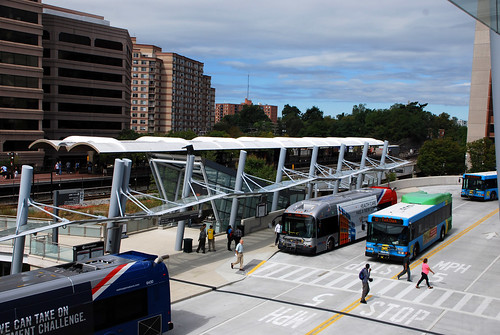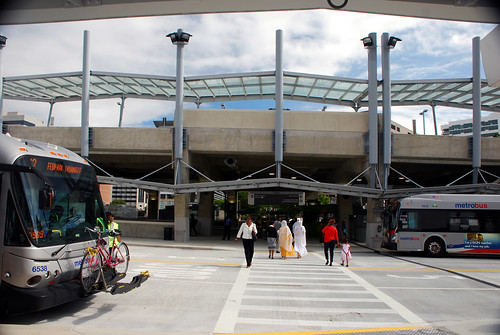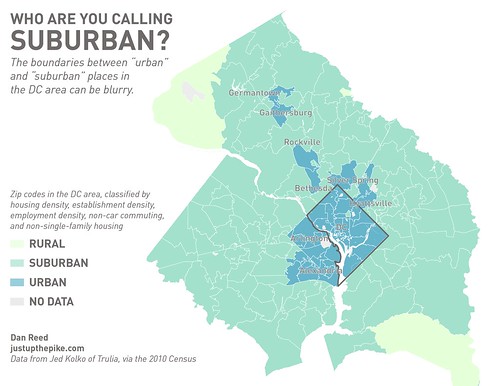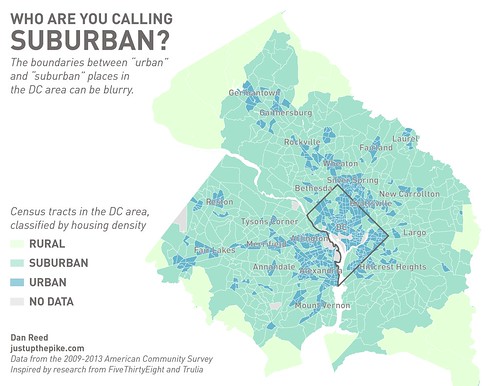After years of delay and budget overruns, the Silver Spring Transit Center finally opened yesterday.
The three-story complex, located next to the Silver Spring Metro station, brings together Metro, MARC commuter rail, local and intercity buses, and a kiss-and-ride. The future Purple Line will also stop there. First proposed in 1996, construction started in 2008.
The transit center was supposed to open in 2012 before officials found serious structural defects. A report found that the county, the designers, and the builders were all at fault, and WMATA refused to take over the building. The county brought in a new structural engineer to organize repairs, which began last fall. Right now, Montgomery County and WMATA are suing the builder and designer.
But now, the transit center is up and running after a low-key opening Sunday morning. The first bus, a Metrobus 70 headed to Archives, pulled out at 4:08 am. Later in the morning, the Action Committee for Transit announced the winner of its contest to guess the transit center's opening date: Garth Burleyson of Colesville, who'd picked October 26.
 |
| Photo by BeyondDC on Flickr. |
The three-story complex, located next to the Silver Spring Metro station, brings together Metro, MARC commuter rail, local and intercity buses, and a kiss-and-ride. The future Purple Line will also stop there. First proposed in 1996, construction started in 2008.
The transit center was supposed to open in 2012 before officials found serious structural defects. A report found that the county, the designers, and the builders were all at fault, and WMATA refused to take over the building. The county brought in a new structural engineer to organize repairs, which began last fall. Right now, Montgomery County and WMATA are suing the builder and designer.
 |
| Photo by BeyondDC on Flickr. |
But now, the transit center is up and running after a low-key opening Sunday morning. The first bus, a Metrobus 70 headed to Archives, pulled out at 4:08 am. Later in the morning, the Action Committee for Transit announced the winner of its contest to guess the transit center's opening date: Garth Burleyson of Colesville, who'd picked October 26.




